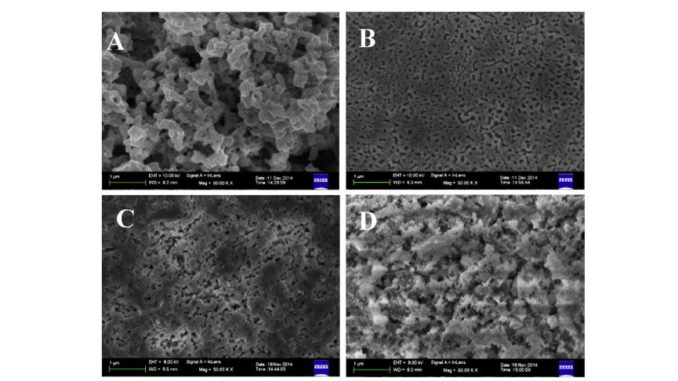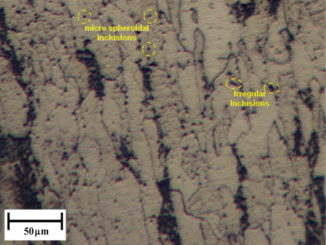
Photoelectrocatalytic properties of BiVO4 prepared with different alcohol solvents
Abstract: BiVO4 has been receiving attention for applications in photoelectrochemical devices. This paper describes the effect of different alcohol solvents (ethanol, ethylene-glycol, PEG300 and PEG 400) on the morphology, crystal growth, crystalline size, thickness, photophysical and photoelectrochemical properties of BiVO4 photoanodes prepared from a suitable, simple and inexpensive one-step process. All samples exhibited good crystallinity with the monoclinic phase dominating and with suitable bandgap for visible light harvesting; but the morphology, thickness, and resulting photocurrents varied broadly. The unmodified BiVO4 photoanode prepared with PEG 300, gave a particularly good photocurrent of 0.77 mA cm(-2) at 1.23 V vs RHE under illumination of 100 mW cm(-2). In this case, a higher value for the ratio between the intensities of the XRD peaks, (040)/(121), was verified, as well as smaller crystallite size. Considering the type of solvent, the BiVO4 photoanode prepared with PEG 300 exhibited a more intense photocurrent. The optimization of the solvent employed in the synthesis of the BiVO4 photoanode is a crucial step in the development of a photoelectrochemical device based on this material. (C) 2016 Hydrogen Energy Publications LLC. Published by Elsevier Ltd. All rights reserved.
Author(s): Ribeiro, FWP; Gromboni, MF; Marken, F; Mascaro, LH.
INTERNATIONAL JOURNAL OF HYDROGEN ENERGY
Volume: 41 Pages: 17380-17389 Published: OCT 19 2016
PDF Photoelectrocatalytic properties of BiVO4 prepared with different alcohol solvents
DOI: 10.1016/j.ijhydene.2016.07.159




